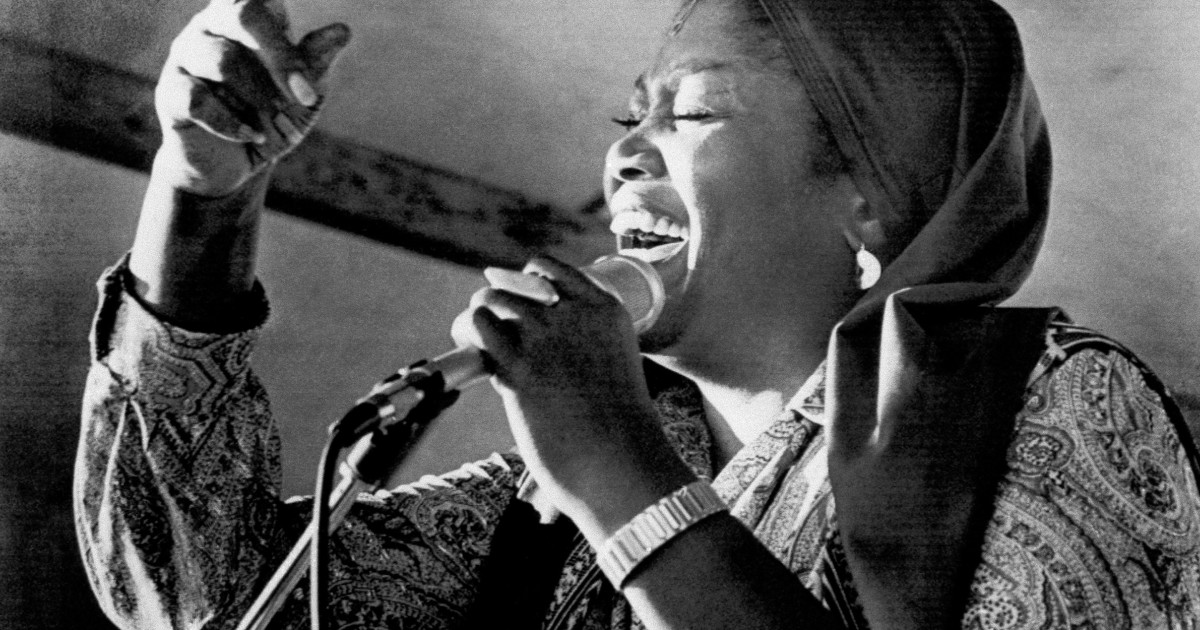The Civil Rights Protest Song Through the Ages

In 1877, 12 years after slavery was abolished in the United States, Thomas Edison invented the phonograph, the first ever device that could record and play back sound. With this pioneering invention, music would soon become a popular medium for emotional expression, and a platform to catalyse social change; and so, the protest song was born.
The African American community, still haunted by the horrors of slavery, and struggling in a racist society, used the cathartic protest song to influence the hearts, and minds of countless music listeners everywhere.
Though the protest song may often be associated with white folk musicians, such as Bob Dylan and Joan Baez, due to their pacifistic messages, it was of course the protest music of black artists which most faithfully documents the struggle for civil rights, throughout the twentieth century and beyond.
In celebration of Black History Month, I will be taking a retrospective look at some of the most memorable and powerful, sometimes lesser-known, civil rights songs across the last 100 years:
Louis Armstrong – ‘(What Did I Do to be So) Black and Blue’ (1929)
Immortalised in Ralph Ellison’s celebrated 1952 novel, Invisible Man, Louis Armstrong’s version of Fats Waller’s ‘Black and Blue’ became a key touchstone of the swing era of jazz music, and an early example of black protest music. The music-box opening melody gives way to the steady swinging rhythm section, which Armstrong’s trumpet lines effortlessly dance over. From only a few lyrics, his distinctive voice sings volumes about racial injustice.
Billie Holiday – ‘Strange Fruit’ (1939)
When Billie Holiday performed ‘Strange Fruit’, she stood on a pitch-dark stage, illuminated only by a single spotlight, and left afterwards with no encore. The creation of this live atmosphere reflects the sombre tone of this harrowing depiction of slavery’s horrific legacy. The influence of this visceral song earned it the accolade of Time Magazine’s song of the century, in 1999.
Nina Simone – ‘Four Women’ (1966)
Moving forward to the 1960s, Nina Simone’s ‘Four Women’ is the most memorable moment on her acclaimed 1966 album, Wild is the Wind, simply down to its striking emotional intensity and stark lyricism. Over a tense descending melody, Simone’s distinct low-range voice follows the genealogy of four different black women whose lives are permeated by the haunting legacy of slavery. Moving and powerful, ‘Four Women’ is one of Simone’s most dynamic and grief-stricken performances.
Sly and the Family Stone – ‘Stand!’ (1969)
On the more upbeat side of things is Sly and the Family Stone’s 1969 single ‘Stand!’, which captures the psychedelic funk band at their most optimistic. As the exclamatory title makes clear, the song preached a simple message of strength to all young black Americans, through a rising chorus bursting with energy, and brilliantly uplifting lyrics.
Stevie Wonder – ‘Livin’ for the City’ (1973)
A major highlight from Stevie Wonder’s superb 1973 album, Innervisions, ‘Livin’ for the City’ is the biographic tale of a young black man ‘born in hard time Mississippi’, who strives for a better life in the city of New York. In the song’s evocative interlude, we hear the ambient sounds of the city as the young man arrives, is arrested and scolded by police officers, and sentenced to ten years imprisonment, before Wonder’s vigorous voice returns to finish the ill-fated story. The song is just one artistic example of the dismantling of the idealised American Dream.
N.W.A. – ‘Fuck Tha Police’ (1988)
As is made clear by the uncompromising title, N.W.A.’s hit from their influential 1988 album, Straight Outta Compton, deals directly with the prejudice of police brutality. Taking cues from Wonder’s ‘Livin’ for the City’ interlude, the song is effectively a courtroom scene divided up by rap verses; the ‘N.W.A court’ puts the police on trial in a reversal of institutional roles, and of course wins.
Sade – ‘Feel No Pain’ (1993)
An unconventional pick for a protest song, ‘Feel No Pain’, from Sade’s smooth trip-hop-inflected 1993 album, Love Deluxe, is built on a rumbling bassline and solid groove that underpins her glossy vocal lines. In a heartfelt appeal, she reminds us of the unemployed minorities who need society’s compassion to flourish.
Kendrick Lamar – ‘The Blacker the Berry’ (2015)
It’s safe to say that Kendrick Lamar’s 2015 concept album, To Pimp a Butterfly, is one of the few records from the 2010s to achieve ‘classic status’. A major highlight of this jazz-hip-hop magnum opus is the blistering single ‘The Blacker the Berry’. The pounding groove is unrelenting under the passionate anger of Lamar’s visceral lyrics, as he tears down racial injustice with enough gusto to start a riot. Plus, the vocal distortion that coats the end of the hook is chilling.
Childish Gambino – ‘This Is America’ (2018)
‘This Is America’ is living proof that, in the modern world, visual elements play a vital role in the cultural impact of music. The song is driven by a heavy trap bassline and glitchy drum machine hits, with seemingly superficial lyrics. But its stunning music video sees Childish Gambino (real name Donald Glover) lead a carefree dance sequence through an abandoned warehouse, intentionally distracting us from the symbolic racial injustice happening in the background. That said, there are certainly jaw-dropping moments which provoke the viewer and lay bare the social issues at the heart of modern America. It is an artistic triumph, evidenced by the fact that, at the time of writing, the video has clocked up 727 million views on YouTube. If one of those figures isn’t you, you’re missing out.
Image by WBEZ
